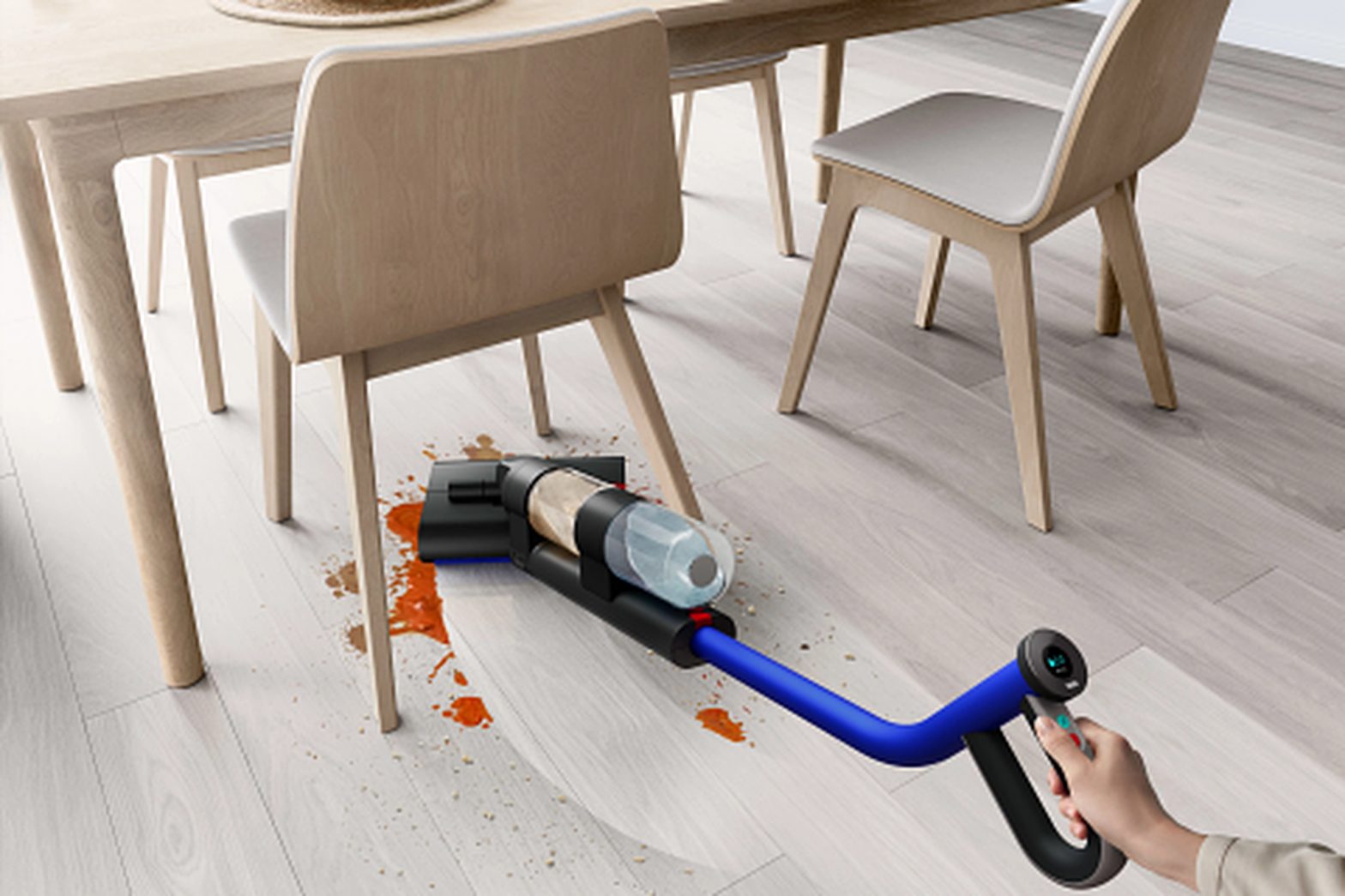/
Dyson’s $700 mechanical mop doesn’t suck or blow, but it does aim to take the hard work out of washing your floors.
Share this story
If you buy something from a Verge link, Vox Media may earn a commission. See our ethics statement.
:format(webp)/cdn.vox-cdn.com/uploads/chorus_asset/file/25446411/WR01_IRSBLBLKBLK_033_RGB_InUse_TableChairs_DownLow_Debris_WoodFloor_1Drop_Hand_A4_MIX.png)
Dyson’s newest device for dealing with dirt in your home is a mechanical mop. Unlike the British engineering company’s flagship fans, hair dryers, and vacuums, the new Dyson WashG1 floor washing machine doesn’t use precision-engineered fans or a fine-tuned Hyperdymium motor. Instead, the mop relies on mechanical agitation to clean up wet spills, picks up dirt and debris, and gives your hard floors a really good wash.
The WashG1 wet floor cleaner — aka mop — costs $699.99 and is the company’s first dedicated mopping device. The cordless, battery-powered mop is slated for release this fall, and you can sign up to be notified when the world’s fanciest mop arrives on Dyson’s site.
While it’s definitely fancy, this isn’t a smart mop — there’s no robotics involved or app connectivity. And while there are plenty of companies out there that will sell you robotic vacuums and mops that clean the floor for you, Dyson relies on you to push this one around. Dyson does sell an upright vacuum / mop combo — the Dyson Submarine — but the WashG1 serves just one purpose: mopping.
However, as this is Dyson, it’s delightfully over-engineered to be the world’s best mop. According to Tom Moody, president of Dyson Home, the big problem its engineers set out to solve is that most mops spread dirty water over your floor when mopping — you know, how when you stick the mop into the bucket full of dirt water and then swish it back all over your floor while “cleaning”?
Dyson thinks it’s cracked this conundrum by constantly pulsing clean water onto its two rolling microfiber mop heads while they work. Instead of hard manual labor pushing the mop back and forth, Dyson uses mechanical agitation with counterrotating rollers to scrub up dried-on stains — meaning you should just need to guide it while it does the hard work. A built-in bristle brush scrapes out any larger debris you mop up, such as Cheerios, and flicks it into a separate debris tray.
You still have to empty the dirty water and clean the debris tray manually (it and other components are dishwasher safe). But the WashG1 can self-clean its rollers, so it’s ready to go the next time you need to clean the floors.
While there’s a small pump and the brushes have motors to drive them, the lack of a big vacuum motor means there’s no filter to get clogged. According to Dyson, this is one reason the WashG1 is much lighter than Dyson’s stick vacuums. It is battery-powered, but again, because there’s no powerful motor, they could get away with a smaller, lighter battery. Dyson’s engineering manager for floorcare, Ketan Patel, says the battery lasts up to 35 minutes, and its 27-ounce tank of clean water can mop up to 3,100 square feet in one go.
It’s fair to say that mops today aren’t great. The fact that the Swiffer is the best thing to happen to manual mopping in the last decade… says a lot. Dyson’s very expensive mop does have a unique approach, and I’ll be very interested to see just how well this $700 floor-washing machine works.
